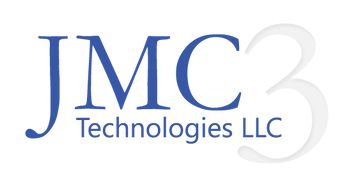Cyber Security = Digital Armor
In today's digital landscape, everyone is a target for cyber threats. It’s not a matter of if, but when a cyber attack will occur. Protecting Personally Identifiable Information (PII) is crucial since client Social Security numbers and financial records make firms prime targets. A simple firewall isn’t sufficient; multiple layers of cybersecurity are needed to protect your firm and client data.
Here are some of the top cyber-threats for 2025 and what they mean
AI-Driven Attacks
Attackers are using artificial intelligence (AI) and generative tools to create highly convincing phishing, deepfake impersonations, voice-spoofing, and adaptive malware that learn and evade traditional defenses.
Ransomware & Extortion Evolutions
It’s like a thief breaking into your house, locking all the doors, and then asking for money before giving you the keys back.
Cloud & Identity Compromise
Many breaches involve attackers using valid credentials, misconfigured cloud services, identity & access management (IAM) flaws, or bypassing multi-factor authentication (MFA).
Legacy Systems & Unpatched Vulnerabilities
Older systems, software that hasn’t been updated, mis-configs and gaps in basic controls remain a strong avenue of attack, allowing intrusion or compromise before the firm even realizes.
Your Protection for Keeping the Actors at Bay.
01
Managed Security Services
- Continuous monitoring and management of security systems.
- Real-time threat detection and response.
- Proactive vulnerability assessments and risk management.
02
Managed Detection and Response (MDR)
- Advanced threat detection at endpoints.
- Automated and manual threat response capabilities.
- Detailed forensic analysis and incident reporting.
03
Network Security
- Firewalls, intrusion detection/prevention systems (IDS/IPS).
- Secure VPNs for safe remote access.
- Network traffic analysis and anomaly detection.
04
Security Awareness Training
User Training:
- Educate employees on recognizing suspicious emails and avoiding phishing scams.
- Simulated phishing attacks to improve vigilance.
- Ongoing assessments to ensure compliance and awareness.
- Regularly conduct simulated phishing exercises to reinforce training.
05
Email Security
Spam and Phishing Filtering:
- Identify and block malicious emails before they reach users' inboxes.
Email Encryption:
- Encrypt emails to protect sensitive information during transmission.
Attachment Scanning:
- Prevent the spread of malicious software through email.
Authentication Protocols:
- Implement SPF, DKIM, and DMARC to verify the legitimacy of email senders.
- Reduce the risk of email spoofing and phishing attacks.
06
Password Management
Centralized Management:
- Store and manage all passwords in a secure, centralized vault, reducing the risk of password leaks.
Strong Password Enforcement:
- Ensure the use of strong, complex passwords by enforcing policies that require a mix of characters, numbers, and symbols.
Automated Password Rotation:
- Regularly update passwords to minimize the risk of compromised credentials.
Secure Sharing:
- Facilitate secure password sharing among team members without exposing the actual passwords.
07
Privileged Access Management
Dynamic Privilege Elevation:
- Emphasizes the least privilege principle, allowing users to perform tasks needing elevated permissions without continuous admin access.
Optimized Request and Approval Workflow:
- Automates management and approval of privilege elevation requests. When users need elevated privileges, a configurable dialog box shows for approval.
Improved Security and Compliance via Auditing and Monitoring:
- Record all UAC elevation requests within the network to enable administrators to monitor privilege usage, identify suspicious activity, and ensure compliance.
08
DNS and Web Filtering
Device-centric DNS and web filtering:
- It monitors internet traffic, blocking harmful websites, phishing schemes, and other threats before they reach the network or endpoint.
User behavioral analytics:
- Analysis of application usage trends and user behavior identifies anomalies and potential threats.
Zero-trust device isolation:
- Immediate isolation of compromised devices prevents threats from spreading across the network. This feature enforces strict controls on inbound and outbound traffic, ensuring network communication is limited to essential interactions only.
Benefits and Advantages of Implementing Cybersecurity Measures.
Protects Sensitive Client Data
You may handle sensitive financial information. Strong cybersecurity measures protect this data from unauthorized access, theft, or loss, ensuring clients' private information is safe from cybercriminals.
Maintains Compliance
Data protection compliance is essential. Cybersecurity measures help your business avoid fines and legal issues. Think of it as an investment in your reputation and integrity.
Prevents Financial Loss
Cyberattacks can cause significant financial losses, including recovery costs and legal fees. Investing in cybersecurity reduces these risks, similar to insurance; while benefits may be delayed, it helps avoid larger expenses over time.
Enhances Client Trust
Clients trust you with their personal and financial information. A commitment to cybersecurity reassures them that their data is protected, strengthening relationships and attracting new business. Prioritizing security helps firms build a strong, trustworthy reputation.
Get the IT Partner your business deserves.
Your time drives your success. Don’t lose it to recurring IT issues.
We help small businesses and professional firms save time and money with proactive solutions and dependable support that keeps everything running smoothly.
Call (973) 814-9771 today or Schedule your free consultation.



